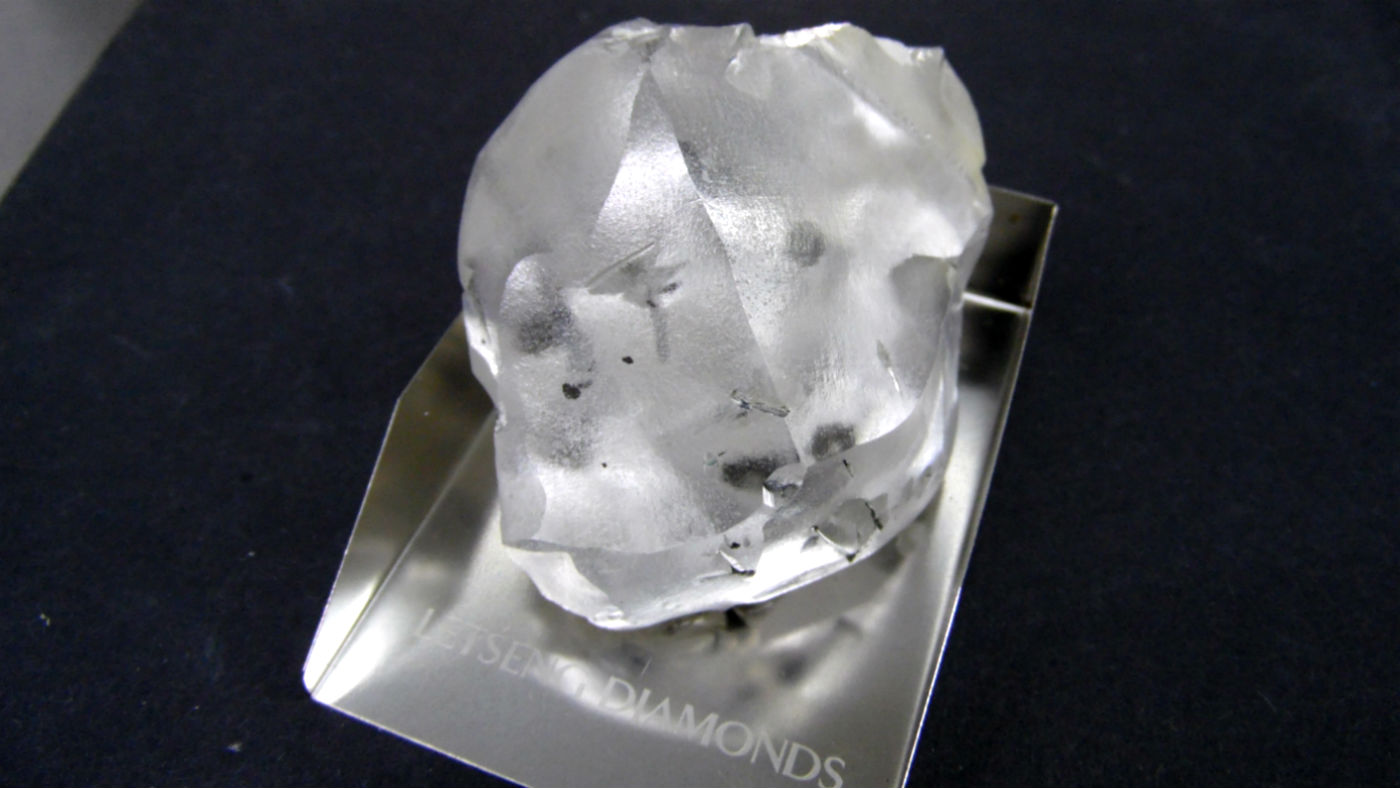Newly discovered diamond among world’s largest ever
Hugh 910-carat gemstone found in Lesotho mine could sell for £30m or more

One of the largest diamonds on record has been unearthed by miners in Lesotho.
The colourless gemstone is around the size of two golf balls and clocks in at 910 carats (182g), about the weight of a snooker ball.
Even more impressive than its size is the stone’s quality. The new find is classified as a Type IIa diamond, which puts it in the top 1% of the world’s finds. With almost no impurities, it ranks alongside famous gems like the Koh-i-Noor. The absence of colour pigmentation further adds to its value.
The Week
Escape your echo chamber. Get the facts behind the news, plus analysis from multiple perspectives.

Sign up for The Week's Free Newsletters
From our morning news briefing to a weekly Good News Newsletter, get the best of The Week delivered directly to your inbox.
From our morning news briefing to a weekly Good News Newsletter, get the best of The Week delivered directly to your inbox.
The diamond was uncovered at the Letseng mine in the mountainous north-east of the landlocked African nation.
Clifford Elphick, chief executive of the mine’s London-based owners Gem Diamonds, called the find a “landmark discovery”.
In a statement, the firm said it believed the stone was the fifth-largest quality diamond ever found.
The Letseng mine “is famous for the size and quality of the diamonds it produces and has the highest average selling price in the world”, says Fortune. The value of the latest find will depend on a variety of factors, but diamonds of a similar weight have sold for sums between £38m and £46m in recent years.
A free daily email with the biggest news stories of the day – and the best features from TheWeek.com
“Assuming that there are no large inclusions running through the diamond, we initially estimate a sale of $40m [£29m],” Richard Knights of London broker Liberum told the Financial Times.
By contrast, 40% of Lesotho's two million residents live below the poverty line of $1.25 per day, Deutsche Welle reports.
-
 How Bulgaria’s government fell amid mass protests
How Bulgaria’s government fell amid mass protestsThe Explainer The country’s prime minister resigned as part of the fallout
-
 Femicide: Italy’s newest crime
Femicide: Italy’s newest crimeThe Explainer Landmark law to criminalise murder of a woman as an ‘act of hatred’ or ‘subjugation’ but critics say Italy is still deeply patriarchal
-
 Brazil’s Bolsonaro behind bars after appeals run out
Brazil’s Bolsonaro behind bars after appeals run outSpeed Read He will serve 27 years in prison
-
 Americans traveling abroad face renewed criticism in the Trump era
Americans traveling abroad face renewed criticism in the Trump eraThe Explainer Some of Trump’s behavior has Americans being questioned
-
 Nigeria confused by Trump invasion threat
Nigeria confused by Trump invasion threatSpeed Read Trump has claimed the country is persecuting Christians
-
 Sanae Takaichi: Japan’s Iron Lady set to be the country’s first woman prime minister
Sanae Takaichi: Japan’s Iron Lady set to be the country’s first woman prime ministerIn the Spotlight Takaichi is a member of Japan’s conservative, nationalist Liberal Democratic Party
-
 Russia is ‘helping China’ prepare for an invasion of Taiwan
Russia is ‘helping China’ prepare for an invasion of TaiwanIn the Spotlight Russia is reportedly allowing China access to military training
-
 Interpol arrests hundreds in Africa-wide sextortion crackdown
Interpol arrests hundreds in Africa-wide sextortion crackdownIN THE SPOTLIGHT A series of stings disrupts major cybercrime operations as law enforcement estimates millions in losses from schemes designed to prey on lonely users

